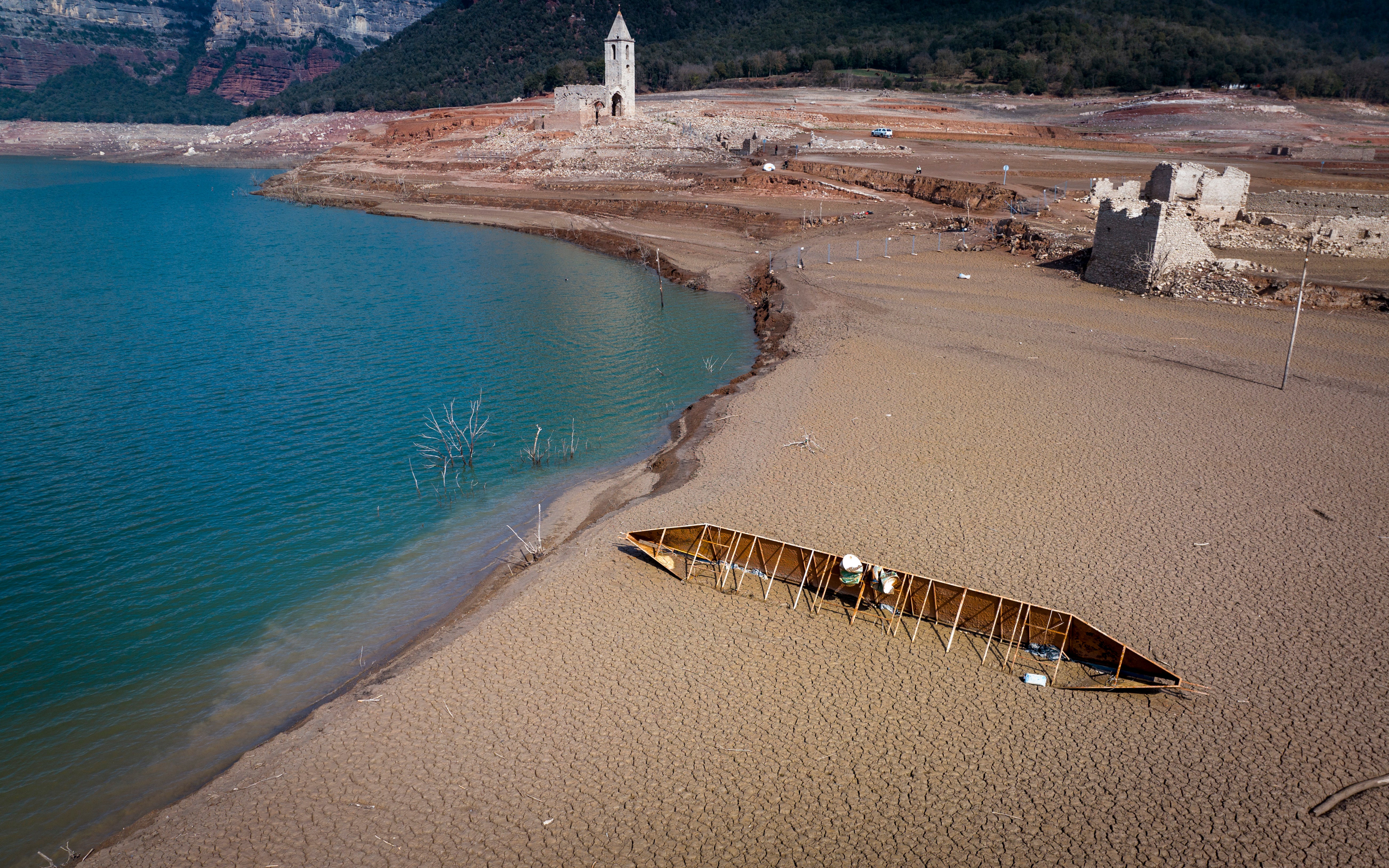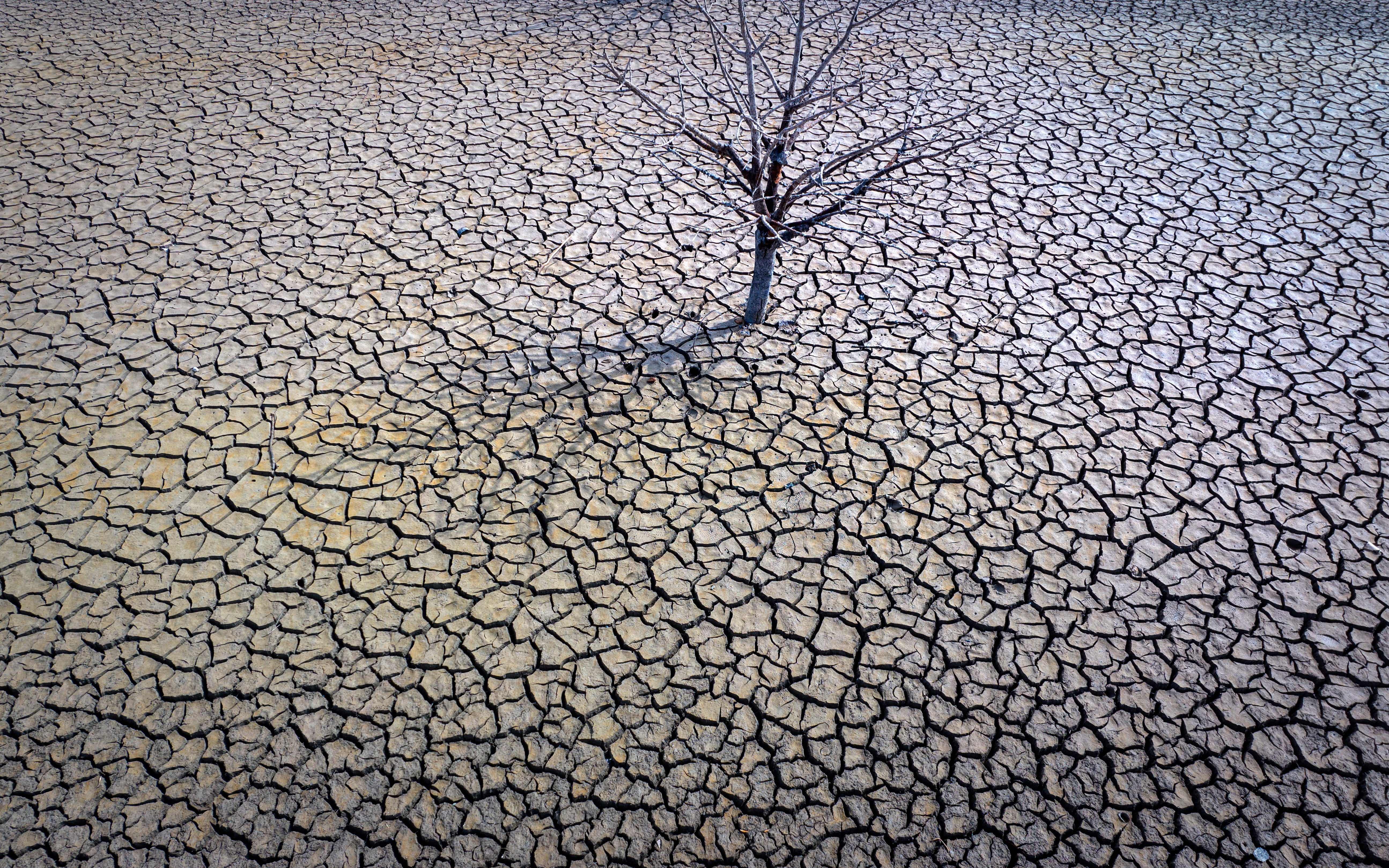Ghost village appears out of reservoir in Spain as country hit by drought
Northeast Spain has experienced ‘exceptional’ droughts over the last month

Your support helps us to tell the story
This election is still a dead heat, according to most polls. In a fight with such wafer-thin margins, we need reporters on the ground talking to the people Trump and Harris are courting. Your support allows us to keep sending journalists to the story.
The Independent is trusted by 27 million Americans from across the entire political spectrum every month. Unlike many other quality news outlets, we choose not to lock you out of our reporting and analysis with paywalls. But quality journalism must still be paid for.
Help us keep bring these critical stories to light. Your support makes all the difference.
A “ghost village” in Spain has recently reappeared, as a reservoir which flooded it in the 1960s has dried out due to an ongoing drought.
San Romà de Sau is the name of the village which was hidden under water when the reservoir was originally built, and it is found near the town of Vilanova de Sau, located an hour north of Barcelona.
The village was once home to the medieval church of Sant Romà, and while the building’s belltower has been spotted above the surface since being submerged, the entire structure can now be seen.
The church’s tower, nave and foundations are currently all on show because of how far the reservoir’s water level has fallen, while the cracked ground surrounding it illustrates the parched weather conditions.

Northeast Spain has experienced “exceptional” droughts over the last month, with Catalan Water Agency figures reporting that water levels are now only at a tiny 9 per cent of the Sau reservoir’s total capacity.
In Catalonia as a whole, average reservoir levels are at around 27 per cent of their capacity.
The country’s Aemet weather agency reported last week that Spain is now in a period of long-term drought, due to the combination of high temperatures and low rainfall during the past three years.
Spain’s temperatures have risen 1.3C since the 1960s when the Sau reservoir was built, and this average rise is estimated to be even higher at 1.6C during the summer months.
The droughts are threatening drinking water access for six million residents who live in the Barcelona metropolitan, and any water still in the reservoir is being diverted to another one in order to protect its quality.
Across Catalonia, there is a hosepipe ban in place for washing cars or filling swimming pools, while those using water for agricultural and industrial purposes also face restrictions.
Join our commenting forum
Join thought-provoking conversations, follow other Independent readers and see their replies
Comments